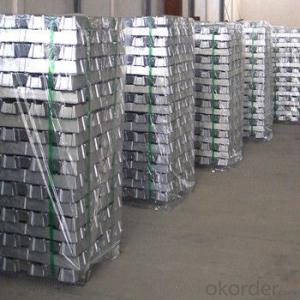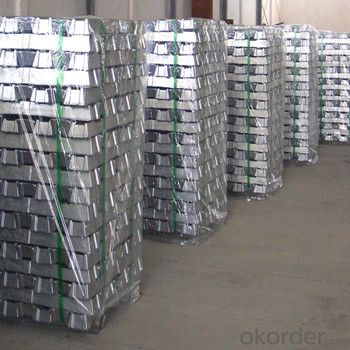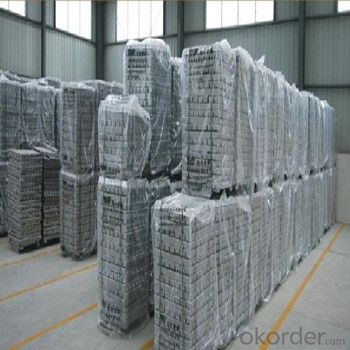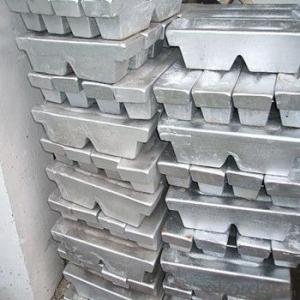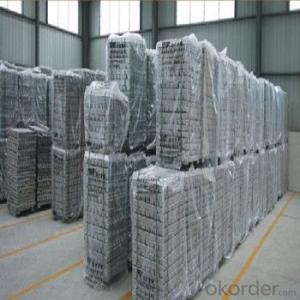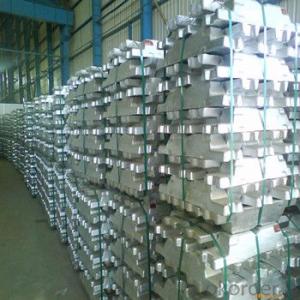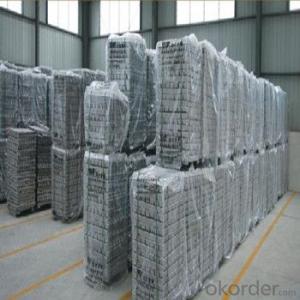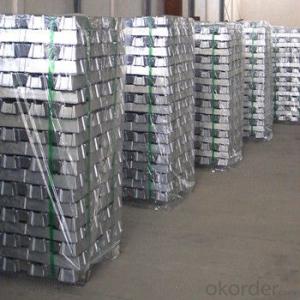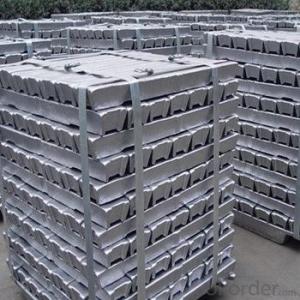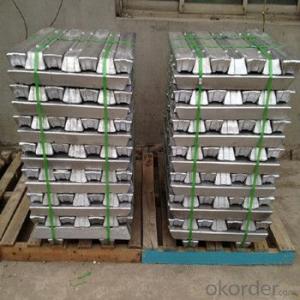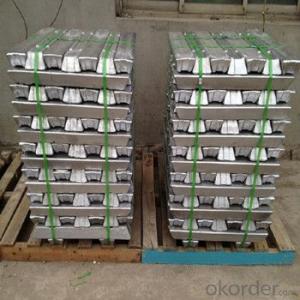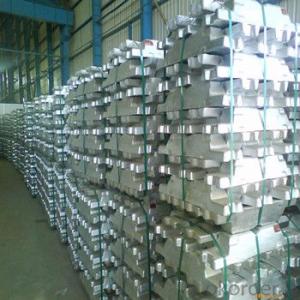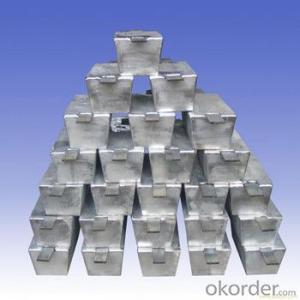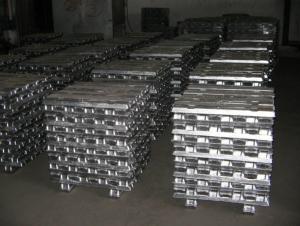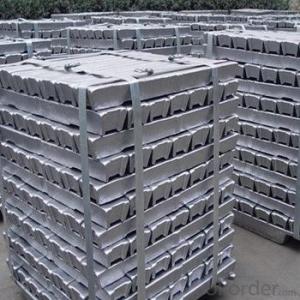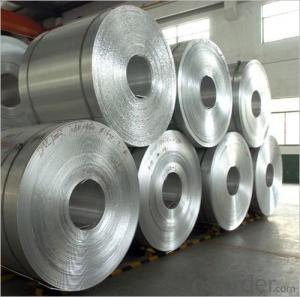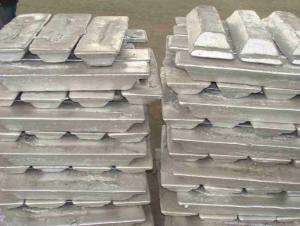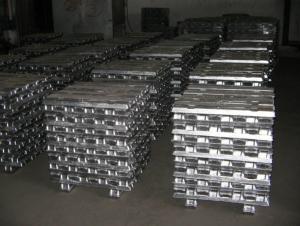Aluminum Pig/Ingot Exported From Chinese Manufacturers
- Loading Port:
- China main port
- Payment Terms:
- TT OR LC
- Min Order Qty:
- 1000 m.t.
- Supply Capability:
- 100000 m.t./month
OKorder Service Pledge
OKorder Financial Service
You Might Also Like
Pure Aluminum Pig/Ingot Used for Industry
1.Structure of Aluminum Pig/Ingot
A material that has been cast into a shape in order to be transported and processed easier than in an unprocessed form. An ingot is typically rectangular in shape, which allows it to be stacked. Ingots are most commonly associated with metals, with ingots of gold held in the vaults of banks and brokerages being popular images.
Aluminum Ingot is with the AL as the main chemical composition.Aluminum Ingot is used for industry,such as automobile,pinning and weaving,electron broadly and so on. Aluminum Ingot has the following advantages: easy control and operation, fast melting.
2.Main Features of the Aluminum Pig/Ingot
•High Purity
•Easy control and operation
•High strength
•Fast melting
•Competitive price
•Best Service
3.Aluminum Pig/Ingot Images

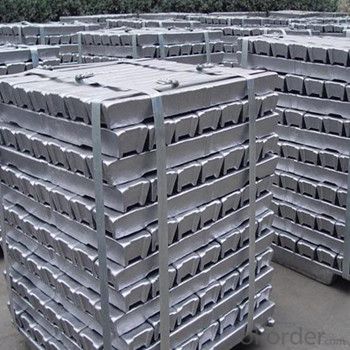
4.Aluminum Pig/Ingot Specification
Grade | Chemical Composition % | |||||||||
Al≥ | impurities ≤ | |||||||||
Si | Fe | Cu | Ga | Mg | Zn | Mn | others | Sum | ||
Al99.9 | 99.90 | 0.50 | 0.07 | 0.005 | 0.02 | 0.01 | 0.025 | - | 0.010 | 0.10 |
Al99.85 | 99.85 | 0.80 | 0.12 | 0.005 | 0.03 | 0.02 | 0.030 | - | 0.015 | 0.15 |
Al99.7 | 99.70 | 0.10 | 0.20 | 0.010 | 0.03 | 0.02 | 0.030 | - | 0.030 | 0.30 |
Al99.6 | 99.60 | 0.16 | 0.25 | 0.010 | 0.03 | 0.03 | 0.030 | - | 0.030 | 0.40 |
Al99.5 | 99.50 | 0.22 | 0.30 | 0.020 | 0.03 | 0.05 | 0.050 | - | 0.030 | 0.50 |
Al99.00 | 99.00 | 0.42 | 0.50 | 0.020 | 0.03 | 0.05 | 0.050 | - | 0.050 | 1.00 |
5.FAQ of Aluminum Pig/Ingot
We have organized several common questions for our clients,may help you sincerely:
①How about your company?
A professional manufacturers of the alumiun pig.Devoted in this industry for many years,so got much experice.The quality and service have also accepted by customer.Can meet customers' requiements to provide different grade and purity alumiun pig.
②How to guarantee the quality of the products?
We have established the international advanced quality management system,every link from raw material to final product we have strict quality test;We resolutely put an end to unqualified products flowing into the market. At the same time, we will provide necessary follow-up service assurance.
③How long can we receive the prod rking days, We will arrange the factory delivery as soon as possible. The pecific time of receiving is related to the state and position of customers.Commonly 7 to 10 working days can be served.
- Q: How are aluminum ingots used in the production of lighting fixtures?
- Aluminum ingots play a crucial role in the production of lighting fixtures due to their unique properties and versatility. Firstly, aluminum is lightweight yet highly durable, making it an ideal material for manufacturing various components of lighting fixtures, such as the body, base, or frame. Its lightweight nature allows for easier installation and transportation, while its durability ensures the longevity of the fixture. Moreover, aluminum has excellent thermal conductivity, which is essential for lighting fixtures as it helps dissipate heat generated by the bulbs. This property allows the fixture to remain cool and prevents overheating, ensuring the safety and efficiency of the lighting system. In addition, aluminum ingots can be easily molded into different shapes and sizes, enabling the production of intricate and aesthetically pleasing lighting fixtures. This flexibility in design allows manufacturers to create a wide range of styles, from sleek and modern to classic and ornate, catering to various consumer preferences. Furthermore, aluminum is highly corrosion-resistant, which is particularly important for lighting fixtures that may be exposed to outdoor elements or high levels of moisture. This property ensures that the fixture remains intact and maintains its appearance, even under harsh conditions. Lastly, aluminum ingots are also environmentally friendly, as they can be easily recycled and have a low carbon footprint compared to other materials. This makes aluminum an attractive choice for lighting fixture manufacturers who prioritize sustainability and want to reduce their environmental impact. Overall, aluminum ingots are indispensable in the production of lighting fixtures due to their lightweight, durable, and thermally conductive properties, as well as their versatility in design and environmental friendliness.
- Q: Does the pure aluminium ingot need to be removed in addition to the slag after melting?
- Specific look at the accuracy of your die-casting, strict requirements can not be removed, reducing costs, more competitive
- Q: How are aluminum ingots used in the production of architectural structures?
- Aluminum ingots are widely used in the production of architectural structures due to their numerous advantageous properties. These ingots serve as the raw material for the manufacturing of various aluminum products such as beams, columns, façades, and roofing systems. One of the primary reasons for using aluminum ingots in architectural structures is their lightweight nature. Aluminum is significantly lighter than other conventional construction materials like steel or concrete. This characteristic makes it easier to transport, handle, and install the finished architectural components, reducing overall construction time and costs. Furthermore, aluminum ingots possess excellent corrosion resistance. When exposed to the elements, aluminum forms a natural oxide layer that protects it from rust and decay. This property ensures that the architectural structures made from aluminum ingots remain strong and visually appealing for an extended period, even in harsh environments. The versatility of aluminum ingots also plays a crucial role in architectural applications. Aluminum can be easily extruded, cast, or molded into various shapes and profiles, allowing architects and designers to create unique and intricate structures. This flexibility enables the production of custom-made components that meet specific design requirements, enhancing the aesthetic appeal of the structures. Additionally, aluminum ingots offer excellent thermal and electrical conductivity. This feature is particularly beneficial in architectural structures as it allows for efficient energy transfer and distribution. Aluminum components can be integrated into heating, ventilation, and air conditioning systems, ensuring optimal energy efficiency and cost savings. Moreover, aluminum ingots are highly sustainable and environmentally friendly. Aluminum is 100% recyclable without losing its original properties, making it a preferred choice for eco-conscious architects and builders. By incorporating aluminum ingots into architectural structures, the construction industry can significantly reduce its carbon footprint and contribute to a more sustainable future. In conclusion, aluminum ingots are widely used in the production of architectural structures due to their lightweight nature, corrosion resistance, versatility, thermal and electrical conductivity, and sustainability. These properties make aluminum ingots an ideal material for creating durable, visually appealing, and energy-efficient structures that meet the demanding requirements of modern architecture.
- Q: What is the process for smelting aluminum ingots?
- Smelting aluminum ingots consists of several steps. To start, bauxite ore, which serves as the main aluminum source, is mined and refined to extract impurities. The refined bauxite is then converted into alumina using the Bayer process. Following that, a large electric furnace is utilized to combine the alumina with cryolite and other additives. This mixture is subjected to extremely high temperatures, reaching approximately 1,800 degrees Celsius. The intense heat causes the alumina to melt and separate into aluminum and oxygen. Subsequently, the molten aluminum is tapped from the furnace and transferred to either a holding furnace or a ladle. During this stage, it is common to alloy the aluminum with other metals to enhance its properties. Common alloying elements include magnesium, silicon, copper, and zinc. Once the desired alloy composition is attained, the molten aluminum is poured into molds to create ingots. These molds are typically constructed from steel and can vary in size and shape based on specific requirements. After the aluminum has solidified and cooled, the ingots are extracted from the molds and undergo further processes such as heat treatment or rolling to achieve the desired mechanical properties and shape. In summary, the smelting process of aluminum ingots encompasses mining and refining bauxite, converting it into alumina, melting the alumina to separate aluminum and oxygen, alloying the molten aluminum, pouring it into molds, and finally processing the solidified ingots to achieve the desired properties.
- Q: How are aluminum ingots used in the production of cookware?
- The unique properties of aluminum ingots are crucial in the production of cookware. These ingots are melted and shaped into various forms like pots, pans, and baking sheets. The excellent heat conductivity of aluminum makes it widely used in cookware production. Unlike other metals, aluminum efficiently conducts heat, ensuring even distribution across the entire cookware surface. This property guarantees consistent cooking results, preventing hotspots and reducing the risk of food burning or sticking. Furthermore, aluminum's lightweight and easy-to-handle nature make it a popular choice for cookware. This feature is especially beneficial for individuals with limited strength or mobility, enabling them to maneuver and lift cookware effortlessly. However, pure aluminum is relatively soft and prone to scratches and dents. To enhance its durability, aluminum ingots are often alloyed with other metals like copper or stainless steel during the manufacturing process. These alloys improve the strength and hardness of the cookware while maintaining the excellent heat conductivity of aluminum. Moreover, aluminum is non-reactive, meaning it does not interact with acidic or alkaline foods. This characteristic ensures that the taste and quality of the cooked food are unaffected by the cookware material. Additionally, aluminum cookware is generally affordable, making it accessible to a wide range of consumers. Its cost-effectiveness, combined with its excellent cooking performance, has made aluminum cookware a staple in kitchens worldwide. In conclusion, the excellent heat conductivity, lightweight nature, and non-reactive properties of aluminum ingots make them indispensable in cookware production. By utilizing aluminum ingots, manufacturers can create cookware that provides even heat distribution, durability, and affordability, enhancing the cooking experience for consumers.
- Q: Can aluminum ingots be used in medical applications?
- Yes, aluminum ingots can be used in medical applications. Aluminum is a versatile metal that offers numerous advantages for medical devices and applications. Its lightweight nature, corrosion resistance, and excellent thermal conductivity make it an ideal choice for various medical equipment and instruments. Aluminum ingots can be used in the manufacturing of medical devices such as prosthetics, orthopedic implants, and surgical instruments. These ingots can be processed into precise shapes and sizes to meet the specific requirements of medical applications. Aluminum is also commonly used in the fabrication of medical equipment like MRI machines, X-ray machines, and dental tools. Additionally, aluminum ingots can be used in the production of medical packaging materials. Aluminum foils are often employed for packaging pharmaceutical products, as they provide a barrier against moisture, light, and oxygen, ensuring the integrity and longevity of the medications. It is important to note that the use of aluminum in medical applications should comply with strict regulations and guidelines to ensure patient safety. Manufacturers must adhere to stringent quality control measures and conduct thorough testing to guarantee the biocompatibility and safety of the final product. In conclusion, aluminum ingots can indeed be used in various medical applications due to their favorable properties. However, it is crucial to ensure compliance with applicable regulations and standards to guarantee the safety and effectiveness of the final medical product.
- Q: How much is the power consumption to smelt a ton of aluminium ingot?
- Theoretically, 1 tons of aluminium ingots are melted down, consuming 500 degrees
- Q: How about aluminium material?
- In the aluminum industry for more than ten years, from bauxite to aluminum ingots, aluminum bars, profiles are relatively ripe.
- Q: What about aluminum ingot futures? How about the aluminum ingot price? Please help me!
- Futures should be familiar with the entry of agricultural products as soon as they begin, and the fluctuation is not so great,
- Q: I want to melt aluminum scrap into aluminium ingots. How can I make them?
- The use of immersion smelting, that is, at least half of the aluminum water in the furnace, the mechanical aluminum into the aluminum water, aluminum water to cover the raw materials, reduce oxidation and burning.
Send your message to us
Aluminum Pig/Ingot Exported From Chinese Manufacturers
- Loading Port:
- China main port
- Payment Terms:
- TT OR LC
- Min Order Qty:
- 1000 m.t.
- Supply Capability:
- 100000 m.t./month
OKorder Service Pledge
OKorder Financial Service
Similar products
Hot products
Hot Searches
Related keywords
